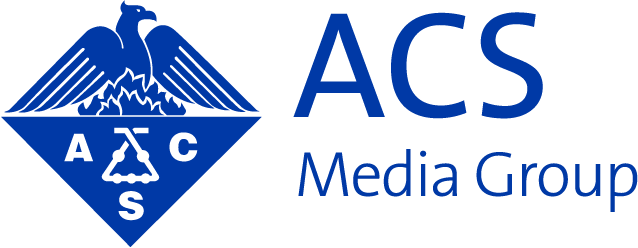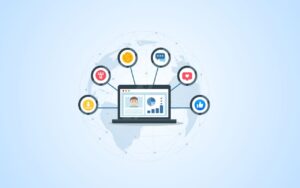An engaging, informative webinar can be an immensely useful tool for biotech, pharma, and chemical companies. Done well, it can provide critical insight into your customers; what they engage with and how they perceive your brand…but a bad webinar can bore you to tears.
You’ve probably been there yourself; sitting in a small room with your headphones on, watching the passage of information-dense bullet points punctuated with the phrase, “next slide,” delivered by a monotonous voice that also tends to drone on about the company’s achievements. Sure, it was a great opportunity to break up your day-to-day work routine. But how much did you really learn if you couldn’t focus on what the webinar presenter was saying? You certainly wouldn’t have walked away with an impression of that company as innovative or dynamic.
Now, it’s time for you to produce your own webinar. What can you do differently that will keep your audience awake and engaged?
Whether you are the marketer behind the scenes, or the one slated to present, everyone on your team should review these webinar guidelines to help ensure overall success.
Distill and Define Your Educational Goals Early
Scientists are forever digging through an avalanche of information (look no further than their desks and offices for evidence). While many love this aspect of their work, they often need specific answers to pressing questions. So, instead of grand overviews and broad strokes, be targeted and realistic with your topic. Webinars don’t have the capacity to effectively teach “cell culture,” but they can teach “best practices for Mycobacterium contamination prevention & elimination in cell culture experiments.” You should then work to refine the key takeaways as much as possible: What are 2-3 valuable concepts that you can share with your audience that will deliver an immediate impact on their work?
Knowing these goals in the beginning can also help clarify your audience’s identity. With this information, you can craft great titles and email campaigns that capture scientists’ thinking about the very questions that you have struck out to answer. In addition, by focusing on a small number of informational nuggets, you can prevent your webinar from running too long or providing too much superfluous information.
Make your Webinar Experimentally Actionable

Building off the previous point, remember that your scientific audience is seeking to gain knowledge that they can apply. This is not a demo; offer experimental information they can use in their work without clubbing them over the head with it. It is valuable to ground at least parts of your webinar in experimental discussions that can lead audience members to helpful fixes, or perhaps guide them towards experts (like your company) who can help them collect the data they seek.
If you are discussing troubleshooting certain experiments, you can even list some outside academic and industry experts with good methods and products that solve outstanding issues. While it may seem counterintuitive to guide them broadly, you are indicating to the audience that you care about helping them solve problems, even if you don’t immediately make a sale. Doing this builds trust and establishes you as a thought leader and a resource in times of need.
Keep Your Webinar Slides Dynamic, Decluttered, and Data-driven
As you’re creating your slides for your webinar, take a cue from Marie Kondo, the current queen of organization, and ask yourself: Do the contents of this slide really spark joy? The fact that your webinar audience can’t see you focuses their attention to what they can see – your slides. Therefore, it’s important to create slides that are legible and dynamic. And make sure your presenters are not reading from them word-for-word!
As a general tactic, it’s a good idea to focus on one message per slide and include plenty of negative space to make each one easy to read and follow. If you can limit the amount of information you place on each slide, you will also be able to advance your slides more rapidly, which can help hold your audience’s attention.
This goes without saying, but scientists love data! So, as you market to academic and industry scientists alike, give them clean figures, graphs, and tables to chew on while they take further insight from the speaker. Ideally the data will either explain the problem/gap at hand or the resolution to the problem/gap to help articulate your key takeaways. Of course, figures that are difficult to follow will have a distracting effect. As the audience tries to wrap their head around them, they will miss the very points you’re trying to make.
How do you know if your tables and graphs are good?
Ask members of your team that are most and least closely associated with the information to test their ability to decipher them. Going one step further, try sharing the figure with some non-scientific team members to see if, with verbal explanation, the graph can be meaningfully understood.
Pro Tip: Don’t forget to carefully curate the data you intend to deliver. While scientists love data, no one loves a data dump. Keep only the figures that help deliver on your key educational goals. While excluding some data may feel incomplete, you’re actually saving your audience time by focusing their attention on what they really need to know. As a bonus, the omissions may provide an opportunity to connect one-on-one with attendees who have additional questions.
Pick an Engaging Speaker
When you’re choosing who will present your webinar, don’t automatically turn to your smartest technician or your highest-level executive.
While they are undoubtedly knowledgeable about the subject matter, they aren’t necessarily the best public speakers and/or may not be in the weeds as much as your bench chemist. Knowing how to command an audience is also a very separate skill. As such, you should choose someone with experience speaking to this kind of audience directly; someone who is inspired and able to communicate ideas well. Prime this person (or train yourself if you’re the designated presenter) to not speak in jargon and statistics. The goal is to shape a compelling and cohesive story that directly meets the needs of the individuals you’re trying to help.
An interested, conversational, and dynamic speaker will keep your audience engaged in a way a boring CEO or technical expert cannot. As long as this speaker is well-versed in the content, they will serve your company well as your webinar presenter.
If you want to learn more about recruiting a great speaker, check out our 5 Tips for Landing Your Webinar Speaker of Choice blog post.
Interact with Your Audience – and Encourage Them to Interact with You
Webinar attendees know you can’t see them, so there is less pressure to pay attention. Meanwhile, as a presenter, it’s easy to forget your audience isn’t beholden to you – they can wander off, mentally and physically, without you knowing. To keep them at their desk and following along, interact with your audience members as much as possible. Ask your audience direct questions, perhaps in the form of polls that they can answer in the comments section.
Similarly, pay attention to the questions your audience submits during your webinar and try to answer them as they come in. Many successful webinars have intermittent Q&A sections (rather than one long one at the end), where, before moving to the next topic, the audience has an opportunity to have their voice heard and questions answers.
Related, some webinar presenters include a survey during registration to gauge their attendees’ incoming level of knowledge and interest, allowing the speakers to frame their talk in a way that will be most useful for their audience. You could even create a Twitter hashtag tied to an upcoming webinar to ask interested viewers to tweet questions or topics at you. Not only does this help generate audience-guided content, it also helps to broaden your viewership with an online community like #chemtwitter.
Use Dialogue to Create a More Dynamic Presentation
It doesn’t matter who you’re listening to; it is difficult to listen to one person speak for an entire hour straight. Without an opportunity to break up the monologue, speakers commonly slip into a robotic tone as they try to disseminate information.
The solution is obvious: Injecting a dialogue and a conversational tone will help convey authenticity while demonstrating the speaker is knowledgeable enough to speak about the topic off-the-cuff.
This can be achieved in a number of ways. You could add a more dynamic host that helps contextualize the speaker’s knowledge base and bookend webinar segments. The host can also read audience questions or comments to bring in alternative viewpoints. They can also ask their own questions when they think more clarification is needed. This may help kick-off audience participation by demonstrating to the audience that questions are valuable to the webinar experience.
Alternatively, you can include multiple speakers in your presentation. This will add natural breaks as transitions are made, allowing your audience to mentally prepare for the next segment. The addition of multiple viewpoints on a topic is also valuable. Similarly, you could have a mixture of “in-house” and external experts. Adding in key opinion leaders (KOLs) and happy customers is a good place to start. They provide a viewpoint from the outside looking in, which mirrors your audience. As a practical example, the contract research organization Eurofins does this well, hosting webinars as panels that include both internal experts and customers who represent the target audience.
CDD Vault, a biological and chemical hosted database and secure collaborative drug discovery data management platform, takes this one step further, sharing honest reviews about its webinars and expounding what makes the product work best for them. As CEO Barry Bunin, PhD, told ACS Media Group, CDD allows their customers to speak on their behalf – instead of just lecturing at them.
Limit the Commercial and Branding Talk
Nothing turns off an informational webinar listener faster than a sales pitch. So, don’t use your webinar as one. While it ultimately may be a tactic to drive sales, especially if you’re using webinars as a lead generation strategy, the point is to demonstrate thought leadership and educate your audience. Neither step can be skipped, as they are key points in the buyer’s journey that must take place before your audience is ready to close a sale.
Keep your webinar high level: Talk about how you are going to address your audiences’ needs; don’t just try to sell them products. Educating your audience outside the awkward context of a sales pitch will enable you to gain your audience’s trust. Through the relationships you develop during your webinar, you can eventually gain their business as well.
Learn more about the buyer’s journey approach to marketing with our white paper.
If you follow these webinar guidelines and develop a plan to refine your educational goals, tightly focus your webinar slides, recruit engaging speakers, and keep your webinar conversational, you’ll be in really good shape. If you manage to feed your scientific audience information they value, not only will you keep everyone awake, but you’ll also keep them coming back for more.
Photo by Edwin Andrade on Unsplash


















